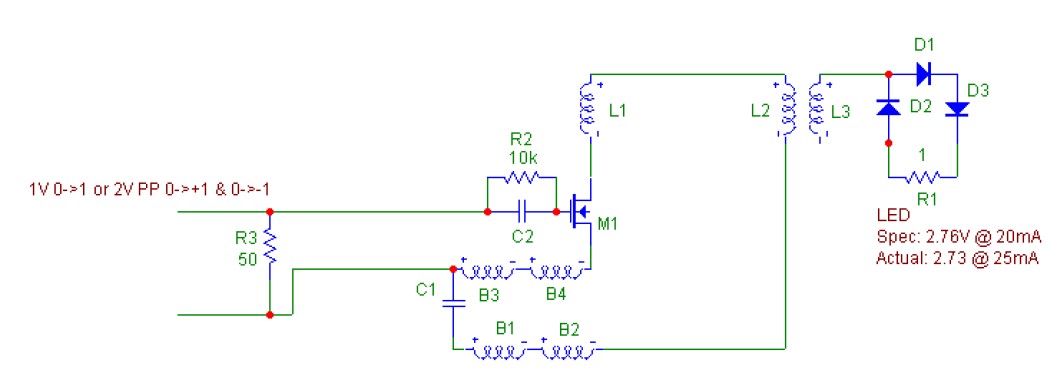Jagau
posted this
25 April 2023
- Last Edited 25 April 2023
First observations:
In this first experiment, two coils are pulsed with a signal generator with a sinusoidal output producing 3 power peaks at 4mhz, 11mhz and 24Mhz. The LED lights up at 2.6 Vdc with a current of 30 ma measured on the oscilloscope.
The negative output of the generator signal is not connected only the positive, as well as the coils L2 and L3 only one side opposite to the other is used, as in the schematic.
The circuit is extremely sensitive when objects approach it, it stops completely if touched with the fingers.
The configuration with one avramenko plug, two diodes and one LED, with a single wire power supply produces an effect that has already been proven in other types of circuits and does not draw additional power from the source wth LED ON or OFF.
Jagau
What we consider to be empty space is merely a manifestation of unawakened matter. N.T.



